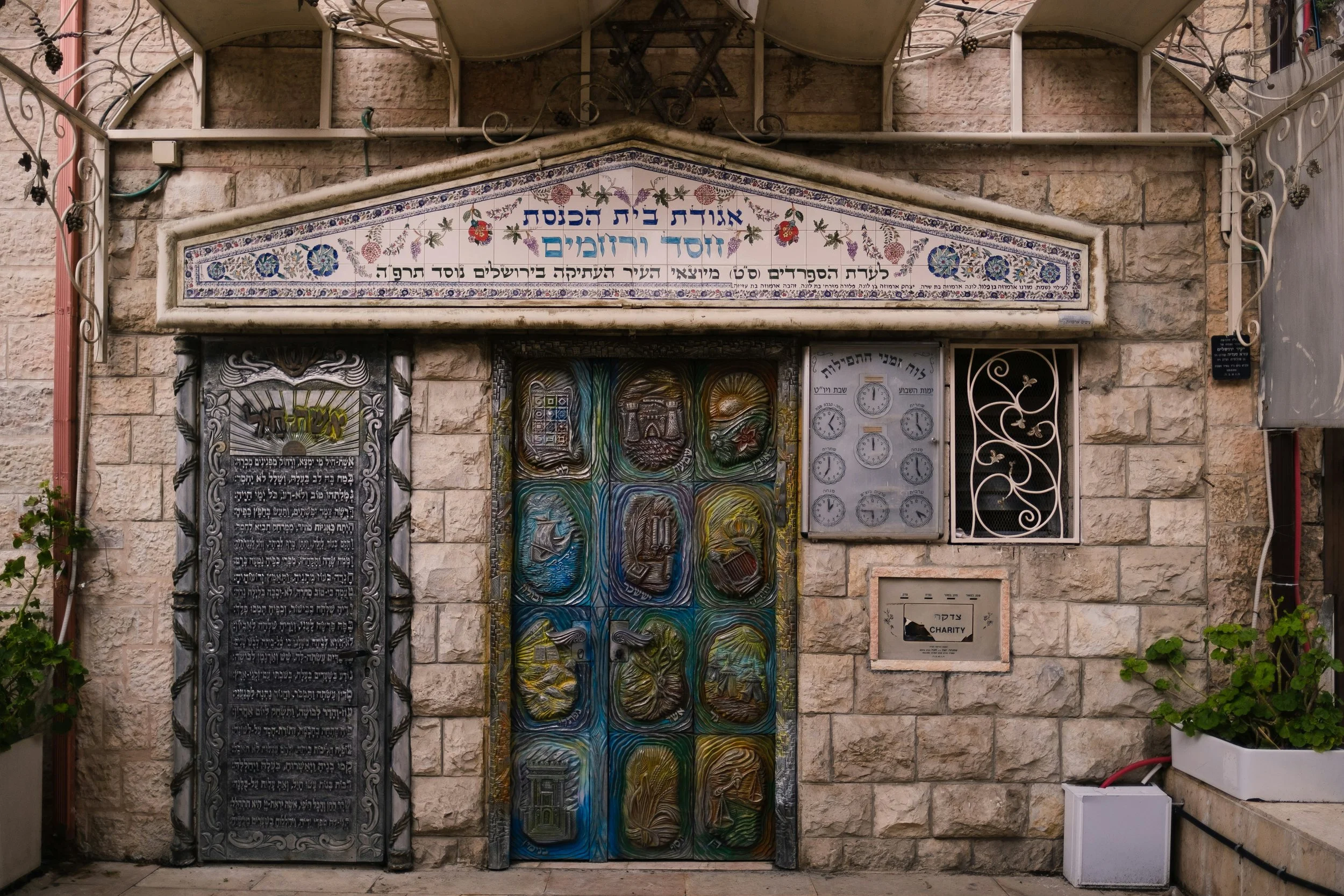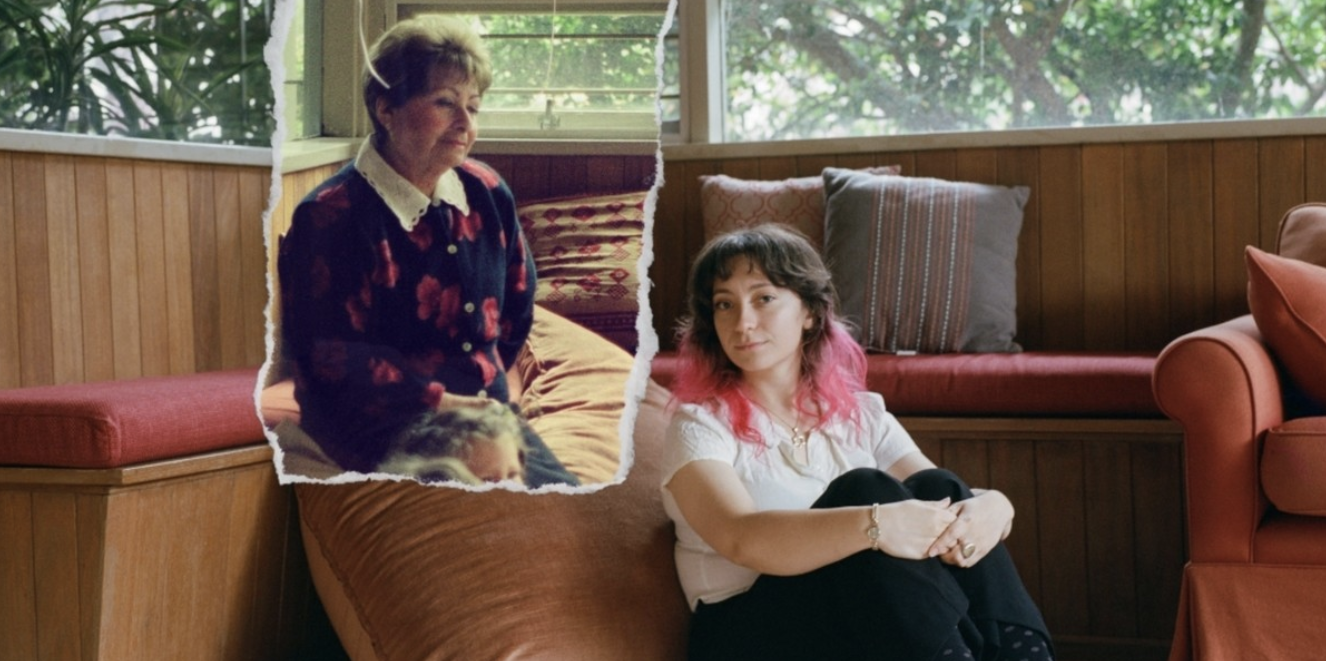Shows That Talk To Each Other
Today’s reviews are of two solo shows that, to me, felt like they were in conversation with each other. Both were written and performed by young Jewish artists reckoning with inherited identity, family history, and the weight of memory- just from different cultural vantage points.
In my mind:
If your family fled Eastern Europe to escape pogroms, settled in the United States, your dad became a human rights lawyer in Washington DC, and you were raised male- you wrote Kaddish (How to be a Sanctuary).
If your family fled to Australia during World War II, you grew up in Melbourne with a psychotherapist for a mom, and you were raised female- you wrote NIUSIA.
Structurally, the shows were strikingly similar. Both were epic family narratives spanning three generations, threading personal stories through the backdrop of 20th century Jewish displacement- and, in the case of Kaddish, the displacement of other groups as well. In each, the artist grapples with the tension between inherited legacy and contemporary self, examining how the world shapes people, and how people try to shape the world in return.
(Note: These reviews were originally published as part of my 2025 Edinburgh Fringe coverage for FringeReview. I’m archiving them here for readers who don’t follow that site.)
Kaddish (How to be a Sanctuary)
TL;DR
Kaddish (How to be a Sanctuary) weaves together personal loss, global politics, and cultural memory into a performance that feels both intimate and expansive. Rather than offering a linear story, it layers voices, texts, and imagery, inviting the audience into an active process of reflection. The result is less about closure and more about creating a space, a sanctuary, for hard realities to resonate.
Review
Some shows at the Fringe entertain, some provoke, some leave you changed. Kaddish (How to Be a Sanctuary) does all three. It is one of the most powerful and necessary hours I’ve seen this year.
From the moment you enter, the set signals this is not just performance, but scholarship and testimony. We see two desks that flank the stage, a mirror of the past and present. One where the grandfather of writer/performer Sam Sherman writes about his life and holds the past, the other where Sherman, himself, documents his life and modern history.
On Sherman’s present day desk, a mug of the Washington DC metro system is beside a stack of books, spines facing the audience, creating a visible onstage anchor in physical and intellectual space. I will list this bibliography of sorts here as I believe the books provide critical context around how Sherman frames this piece:
Mohammed El-Kurd’s Perfect Victims and the Politics of Appeal
Hannah Arendt’s Eichmann in Jerusalem
Octavia E. Butler’s The Parable of the Sower
Adam Mansbach’s The Golem of Brooklyn
Robert Rockaway’s But He Was Good To His Mother: The Lives and Crimes of Jewish Gangsters
Studs Terkel’s The “Good War”
Chris Myers Asch & George Derek Musgrove’s Chocolate City: A History of Race and Democracy in the Nation’s Capital.
The collection feels deliberate, eclectic, and electric: Jewish thought in dialogue with Black history, oral testimony in conversation with political critique, speculative fiction alongside atrocity study. It situates the work immediately in a lineage of thinkers who wrestled with complicity, resilience, and the politics of memory.
The performance itself unfolds as a living kaddish, a memorial prayer, but also a demand that memory become action. Through story, liturgy, and direct address, the performer turns the stage into a sanctuary: not a passive place of refuge, but an active space of reckoning. He doesn’t simply mourn the past- he interrogates it. He doesn’t simply celebrate identity- he complicates it. Jewishness here is not flattened into trauma or triumph, but explored through contradiction.
This piece is just as much about collective history as it is about Sherman himself and his family’s story. It’s a view on how time, place, and legacy shape a person and the world. Sherman shares that he grew up in Washington DC, his father a human rights lawyer, his grandfather a World War II veteran, born from a Jewish line that had to escape Poland and seek refuge in the United States in the early 1900’s. It all creates context for his particular lens on history and current affairs.
There are moments where the weight of the injustices of the world is almost unbearable, then others where humor or irony punctures the tension, reminding us that survival is not only solemn, but also playful, stubborn, and alive. The dramaturgy is rigorous but never academic; it feels as though you are being invited into a study session where text, body, and history are all equally sacred sources.
What makes this show extraordinary is its refusal to make things easy. The performer could have crafted something tidy, uplifting, unthreatening. Instead, he insists on complexity- insisting that sanctuary is not comfort, but confrontation. He asks us to hold paradox: to love a tradition and critique its politics, to grieve the dead and fight for the living, to sit in the safety of theatre while remembering those who are not safe.
Kaddish (How to Be a Sanctuary) is the kind of work that stays with you. It lingers like scripture, like protest, like a voice insistent that you not forget. In a festival teeming with noise, this show is a rare space of depth, clarity, and moral imagination. It’s a Must See.
NIUSIA
TL;DR
In NIUSIA, Beth Paterson weaves family history into a gripping solo performance that is as intimate as it is epic. Through masterful physicality, sharp character work, and a balance of humor and gravity, she brings her grandmother- a complex, formidable Holocaust survivor- vividly to life. The result is a piece that resonates far beyond its subject, inviting every audience member to consider the legacies they carry.
Review
Beth Paterson’s NIUSIA is a rare piece of solo theatre that feels both intimate and epic, as if we are sitting in a living room hearing family stories while simultaneously standing in the middle of history. Drawing on the life of her grandmother Niusia, a Holocaust survivor, Paterson crafts a layered meditation on generational trauma, Jewish identity, and the contradictions within the people we love. The result is an hour that feels meticulously shaped yet alive in the moment. It’s a performance that never loosens its grip.
The staging is stuffed: a table stacked with books flanked by chairs, an armchair, and piles of cardboard boxes full of even more books. These books become a recurring motif, representing knowledge, legacy, and the literal weight of history. Paterson builds her world through small but precise shifts in lighting, voice, and physicality, moving seamlessly between herself and her grandmother. At times she is in conversation with the voiceover of her psychologist mother. The effect is like watching an expert embroider: each thread distinct, while the image becomes richer with every pass.
What makes NIUSIA so compelling is Paterson’s refusal to flatten her grandmother into a saintly figure. This is not a soft-focus tribute; it is a reckoning with a woman who was charming and magnetic at her best, and sharp-tongued or explosive at her worst. Growing up, Paterson wanted to avoid visits. As an adult, she finds herself drawn to the strength and unapologetic presence that run through her maternal line. This duality- pride and discomfort, reverence and frustration- fuels the performance and makes it feel deeply honest.
Her command of physical transformation is striking. A change in accent, a tilt of the head, the set of the shoulders, and suddenly we’re in the presence of someone else entirely. When she becomes her grandmother, her gaze sharpens, her energy expands to fill the room even more. When she is herself, recounting her uncooperative teenage years or the revelations of adulthood, her vulnerability is palpable, though never sappy.
Some of the show’s most memorable moments come through physical action. In one scene, Paterson violently hurls books across the stage, the thuds landing like blows- a physical echo of her grandmother’s rages and the violence of the Holocaust. Later, she repacks them slowly and neatly, embodying the aftermath of chaos and the need to restore order. It’s an image that lingers long after the scene ends.
While this show is full of movement, Paterson also understands the value of silence and stillness. She lets the heavy moments breathe, trusting the audience to sit with discomfort before offering a release through humor or warmth. This balance of gravity and levity mirrors the nature of family stories, with moments of laughter nestled inside decades of hardship.
The design supports her fully. The soundscaping draws us into bustling shops, raucous parties, or the tension of war. Lighting cues are subtle yet potent, shifting us between times and emotional registers without ever pulling focus from the performer. Everything is in service of the storytelling.
For Jewish audience members, NIUSIA may offer a sense of recognition, a chance to see the complexity, pride, and intergenerational wrestling that can go unspoken. For those outside the community, it opens a door to understanding how history lives in the body, in family rituals, and in the small, daily negotiations between who we come from and who we choose to be.
This is Must See theatre not simply because it is important, but because it achieves something rarer: it is important and artistically thrilling. Paterson gives us a performance that is precise yet alive, deeply personal yet universally resonant. You leave not just with a clearer picture of Niusia, but with a sharper awareness of what could be in your own family’s myths, silences, and legacies.








